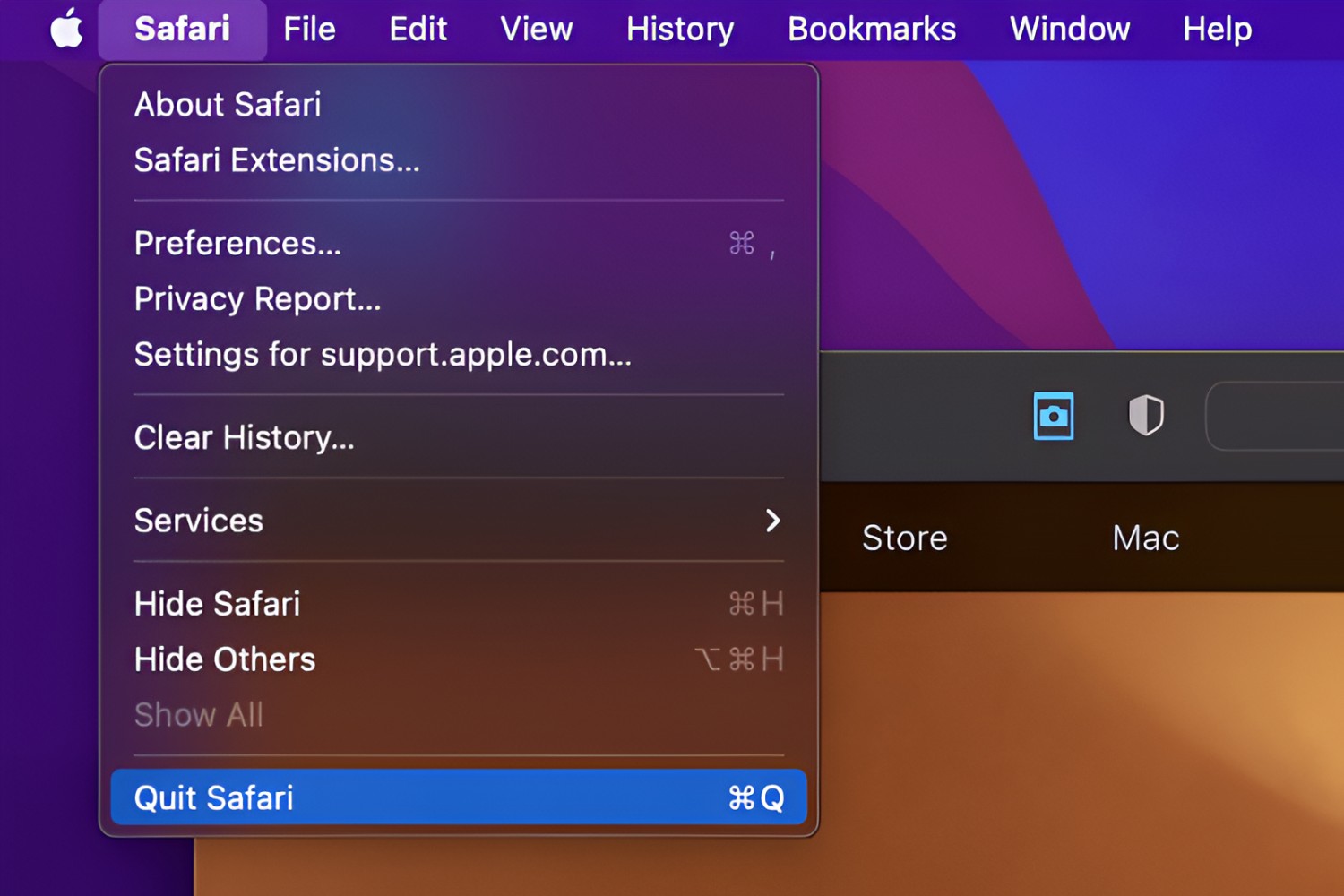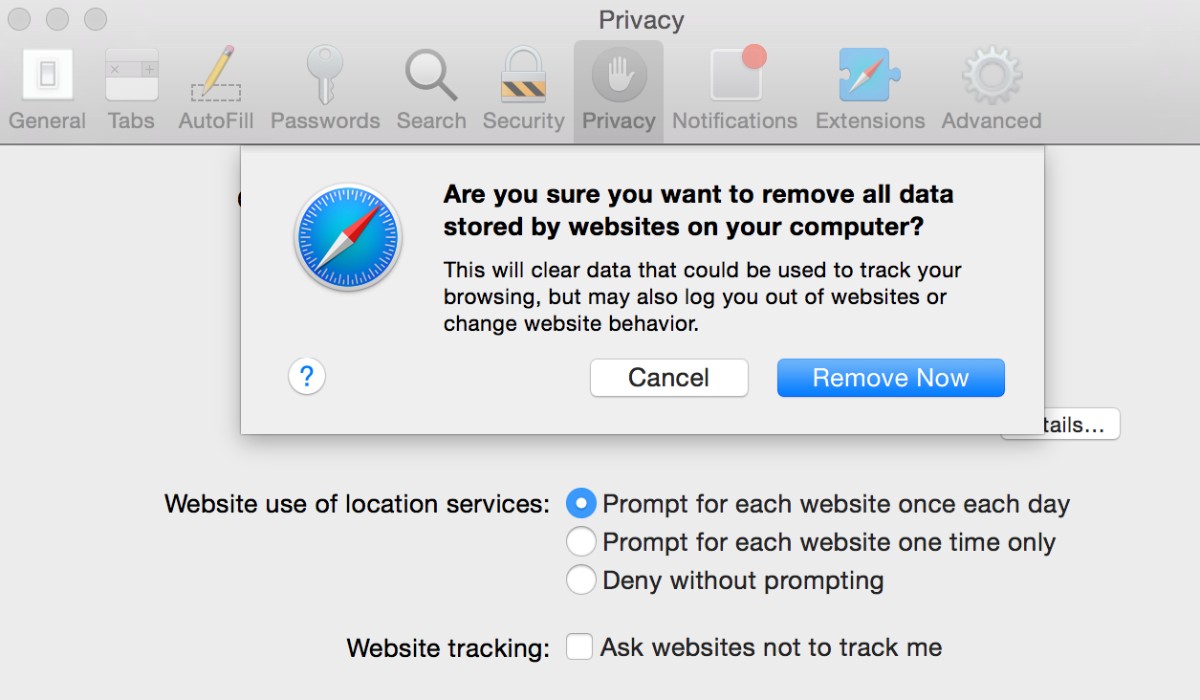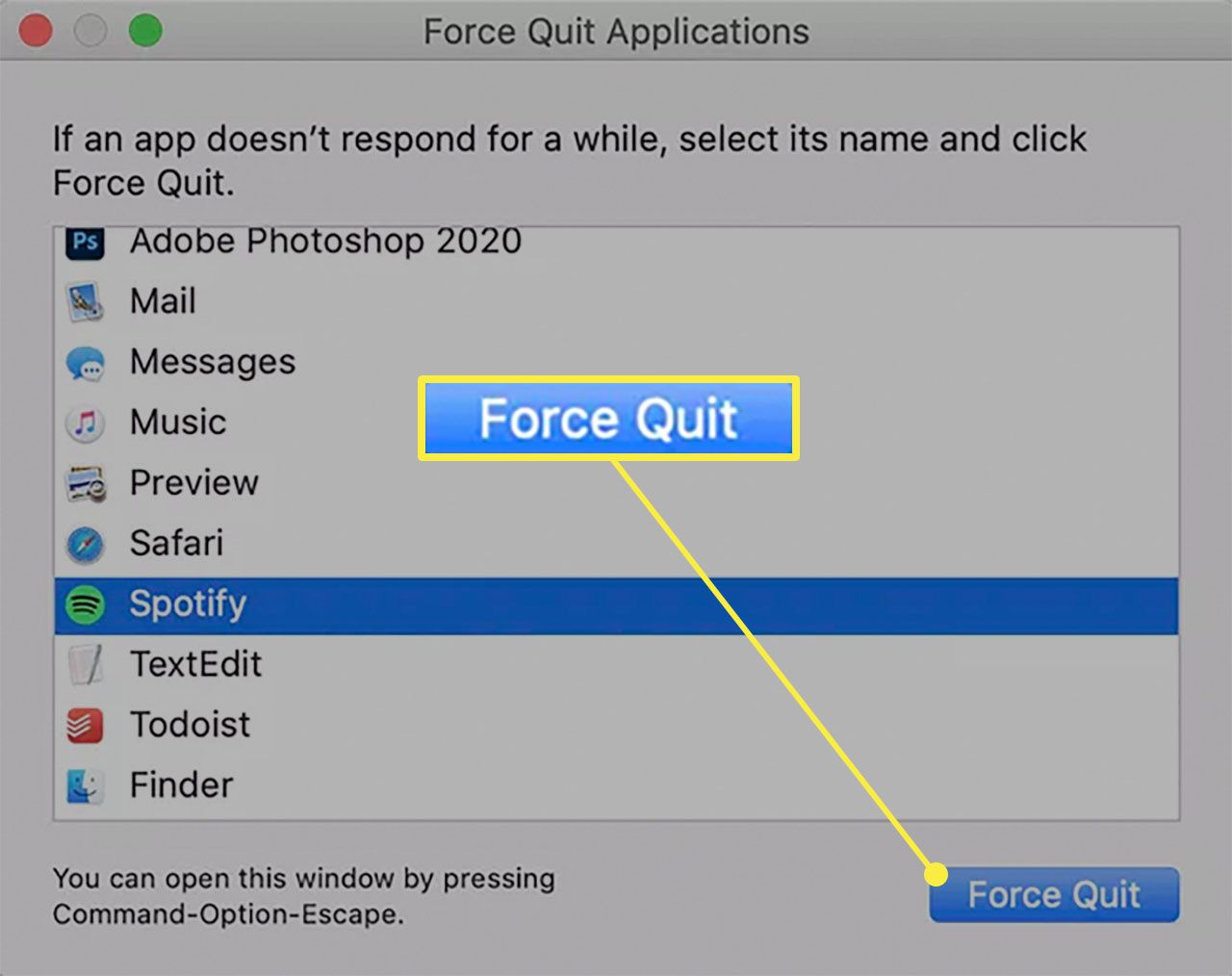Introduction
Quitting Safari on your Mac might seem like a straightforward task, but it's not uncommon for users to encounter challenges when attempting to do so. Whether you're looking to troubleshoot a persistent issue, free up system resources, or simply switch to a different web browser, knowing how to properly quit Safari is essential. In this guide, we'll explore three effective methods to help you gracefully exit Safari on your Mac.
As you navigate through the various tasks on your Mac, you may find that Safari becomes unresponsive or fails to function as expected. In such instances, quitting the application can serve as a quick remedy to resolve the issue. Additionally, closing Safari can free up memory and processing power, which can be beneficial if you're running resource-intensive applications or experiencing sluggish performance.
Understanding the different methods for quitting Safari is crucial, as it provides you with the flexibility to choose the most suitable approach based on your preferences and the specific circumstances you encounter. Whether you prefer using keyboard shortcuts, the Dock, or the Activity Monitor, having a comprehensive understanding of these methods empowers you to efficiently manage your browsing experience on your Mac.
By mastering the art of quitting Safari, you gain greater control over your web browsing activities and can navigate your Mac with confidence. With this in mind, let's delve into the various methods for quitting Safari on your Mac, ensuring that you're equipped with the knowledge and skills to seamlessly manage your web browsing sessions.
Method 1: Using the Quit Command
When it comes to gracefully exiting Safari on your Mac, using the Quit command is a straightforward and efficient method. This approach allows you to seamlessly close the Safari application, ensuring that all associated processes are terminated, and system resources are freed up. Whether you're experiencing unresponsiveness, glitches, or simply need to switch to a different browser, mastering the Quit command empowers you to take control of your web browsing experience.
To initiate the Quit command, you can utilize the keyboard shortcut Command + Q. This intuitive combination triggers the closure of Safari, prompting any active tabs or windows to gracefully shut down. By incorporating this shortcut into your browsing routine, you can swiftly exit Safari without the need to navigate through menus or interfaces, streamlining the process for optimal efficiency.
Alternatively, you can access the Quit command by clicking on the "Safari" menu located in the top-left corner of your screen. Upon clicking the menu, a dropdown list will appear, presenting the "Quit Safari" option. Selecting this option triggers the same process as the keyboard shortcut, allowing you to promptly exit the application.
It's important to note that utilizing the Quit command ensures that any active downloads, extensions, or background processes associated with Safari are also terminated. This comprehensive approach to closing the application helps maintain the stability and performance of your Mac, preventing potential conflicts or resource drain.
By familiarizing yourself with the Quit command, you gain the ability to swiftly and effectively manage your browsing sessions, enabling you to troubleshoot issues, optimize system resources, and seamlessly transition between applications. This method serves as a fundamental skill for Mac users, empowering them to maintain a smooth and efficient web browsing experience.
Incorporating the Quit command into your browsing routine equips you with the knowledge and skills to gracefully exit Safari, ensuring that you can navigate your Mac with confidence and efficiency. With this method at your disposal, you have the flexibility to seamlessly manage your web browsing activities, enhancing your overall Mac experience.
Method 2: Using the Dock
Utilizing the Dock to quit Safari on your Mac offers a convenient and visually intuitive approach to gracefully exit the application. The Dock serves as a central hub for accessing and managing your frequently used applications, providing quick and easy access to essential functions. By leveraging the Dock, you can seamlessly close Safari and streamline your web browsing experience with minimal effort.
To initiate the process of quitting Safari using the Dock, begin by locating the Safari icon within the Dock. The Safari icon is typically represented by a compass-like symbol, making it easily identifiable amidst other applications. Once you've located the Safari icon, proceed by right-clicking or control-clicking on the icon to reveal a contextual menu.
Within the contextual menu, you will find the "Quit" option listed alongside other relevant commands. Selecting the "Quit" option triggers the closure of Safari, prompting any active tabs or windows to gracefully shut down. This streamlined approach allows you to efficiently exit the application without the need to navigate through multiple menus or interfaces, simplifying the process for optimal convenience.
In addition to the right-click or control-click method, you can also employ a simple keyboard shortcut to access the Quit command directly from the Dock. By pressing and holding the "Control" key while simultaneously clicking on the Safari icon in the Dock, you can access a quick-access menu containing the "Quit" option. This efficient combination of keyboard and mouse input provides a seamless and expedited means of closing Safari, enhancing your overall browsing experience.
The Dock serves as a versatile and user-friendly tool for managing applications on your Mac, offering a visually appealing and accessible platform for executing essential functions. By leveraging the Dock to quit Safari, you can effortlessly streamline your web browsing activities, ensuring that you have the flexibility and control to manage your browsing sessions with ease.
Incorporating the Dock into your workflow empowers you to efficiently navigate your Mac, access essential applications, and seamlessly execute commands, including the graceful closure of Safari. By mastering this method, you can enhance your overall Mac experience and optimize your web browsing activities with confidence and convenience.
Method 3: Using the Activity Monitor
When traditional methods for quitting Safari prove ineffective, leveraging the Activity Monitor offers a powerful and comprehensive approach to gracefully exit the application. The Activity Monitor serves as a robust system utility that provides real-time insights into the performance and resource utilization of applications running on your Mac. By harnessing the capabilities of the Activity Monitor, you can effectively identify and terminate unresponsive processes, including Safari, ensuring a seamless and efficient browsing experience.
To initiate the process of quitting Safari using the Activity Monitor, begin by accessing the "Applications" folder within your Mac's "Finder." From the "Applications" folder, navigate to the "Utilities" subfolder, where you will find the "Activity Monitor" application. Upon launching the Activity Monitor, you are presented with a comprehensive overview of active processes, system resources, and performance metrics.
Within the Activity Monitor interface, locate the "Safari" process listed under the "CPU" or "Memory" tab, depending on your preferred view. The "Safari" process is typically identifiable by its application icon and name, making it easily distinguishable amidst other active processes. Once you've identified the "Safari" process, proceed by selecting it to highlight the entry.
With the "Safari" process highlighted, navigate to the top-left corner of the Activity Monitor interface and locate the "Quit Process" button represented by an "X" icon. Clicking the "Quit Process" button triggers a prompt requesting confirmation to terminate the selected process. Upon confirming the action, the Activity Monitor gracefully terminates the Safari process, effectively closing the application and freeing up system resources.
The Activity Monitor offers a comprehensive and granular approach to managing active processes on your Mac, providing you with the flexibility to identify and terminate specific applications as needed. By leveraging the Activity Monitor to quit Safari, you gain a deeper understanding of the underlying processes and resource utilization, empowering you to maintain a stable and responsive browsing environment.
Incorporating the Activity Monitor into your troubleshooting toolkit equips you with the knowledge and skills to efficiently manage unresponsive applications, optimize system resources, and maintain the overall performance of your Mac. By mastering this method, you can navigate your web browsing activities with confidence, knowing that you have the tools to address any potential challenges that may arise.
By embracing the capabilities of the Activity Monitor, you can elevate your Mac experience, ensuring that you have the means to gracefully exit Safari and effectively manage your browsing sessions with precision and control.
Conclusion
Mastering the art of quitting Safari on your Mac is a fundamental skill that empowers you to seamlessly manage your web browsing activities with confidence and efficiency. By exploring the three effective methods for gracefully exiting Safari, you gain valuable insights into the diverse approaches available, each offering unique advantages for optimizing your browsing experience.
The Quit command, with its intuitive keyboard shortcut and menu-based functionality, provides a swift and comprehensive means of closing Safari, ensuring that all associated processes are gracefully terminated. This method serves as a fundamental skill for Mac users, enabling them to troubleshoot issues, optimize system resources, and seamlessly transition between applications with ease.
Utilizing the Dock to quit Safari offers a visually intuitive and convenient approach, allowing you to seamlessly close the application with minimal effort. By leveraging the Dock's quick-access menu, you can efficiently execute the Quit command, streamlining your web browsing activities and enhancing your overall browsing experience with its user-friendly interface.
The Activity Monitor, with its robust system utility capabilities, provides a powerful and granular approach to managing active processes on your Mac. By harnessing the Activity Monitor's insights, you can effectively identify and terminate unresponsive processes, ensuring a stable and responsive browsing environment while gaining a deeper understanding of resource utilization.
Incorporating these methods into your workflow equips you with the knowledge and skills to efficiently navigate your Mac, troubleshoot potential challenges, and optimize your web browsing activities with precision and control. Whether you prefer the simplicity of keyboard shortcuts, the visual appeal of the Dock, or the granular control of the Activity Monitor, having a comprehensive understanding of these methods empowers you to gracefully exit Safari based on your preferences and specific circumstances.
By embracing these diverse methods, you can elevate your Mac experience, ensuring that you have the means to seamlessly manage your web browsing sessions, troubleshoot issues, and optimize system resources with confidence and efficiency. With these valuable skills at your disposal, you can navigate your Mac with ease, knowing that you have the tools to address any potential challenges that may arise, ultimately enhancing your overall browsing experience.

























